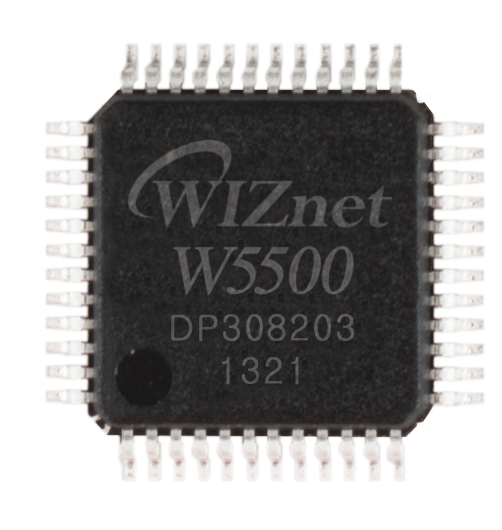MicroPython - STM32 W5500 Ethernet module socket communication
This project demonstrates how to set up and use socket communication with an STM32 board and a W5500 Ethernet module in a MicroPython environment.

STMicroelectronics - STM32F405RGT6
x 1
1. Project Overview & Features
Core Functionality:
- Implements socket communication in a MicroPython environment using an STM32 board and a W5500 Ethernet module.
- Provides a reliable and efficient Ethernet communication solution for embedded systems.
Problem Solved & Purpose:
- Enables stable and direct communication in embedded systems.
- Suitable for various IoT applications, including real-time monitoring, industrial automation, and smart devices.
Key Features:
- Hardware: STM32 microcontroller, W5500 Ethernet module
- Network: Wired Ethernet using W5500
- Protocol: TCP/IP socket communication
- Data Handling: MicroPython-based data transmission
2. Hardware & Software Stack
Hardware:
- MCU: STM32 series board
- Network Module: W5500 Ethernet module
- Additional Peripherals: No specific sensor mentioned, but can integrate with various sensors
Software:
- Programming Language: MicroPython
- Libraries Used:
- Built-in MicroPython networking libraries
- W5500 Ethernet driver for MicroPython
- Network Protocol: TCP/IP
3. Key Parts of the Source Code
Ethernet Connection Setup
import network
import socket
# Initialize W5500 Ethernet module
nic = network.WIZNET5K(spi, pin_cs, pin_rst)
nic.active(True)
nic.ifconfig(('192.168.1.2', '255.255.255.0', '192.168.1.1', '8.8.8.8'))Socket Creation & Connection
# Create a TCP socket
s = socket.socket()
s.bind(('192.168.1.2', 80))
s.listen(5)
while True:
conn, addr = s.accept()
print('Connection from', addr)
# Receive and process data
data = conn.recv(1024)
# Send data back
conn.send(data)
conn.close()4. Comparison with Traditional Implementations
Advantages:
✅ MicroPython-based: Faster prototyping with simpler code.
✅ Hardware TCP/IP Offloading: The W5500 module handles networking independently, reducing the STM32's processing load.
Disadvantages:
❌ Performance Limitations: MicroPython is slower compared to C/C++.
❌ Limited Library Support: Some advanced networking features may not be available in MicroPython.
5. Suggested Improvements & Enhancements
✔ Security Enhancements: Implement TLS/SSL encryption for secure data transmission.
✔ Error Handling: Improve system stability by adding exception handling for network failures and connection errors.
✔ Data Logging: Enable local storage (SD card) or cloud-based database integration for long-term data logging.
✔ Real-time Monitoring: Implement a simple web interface or integrate with Node-RED for real-time data visualization.

